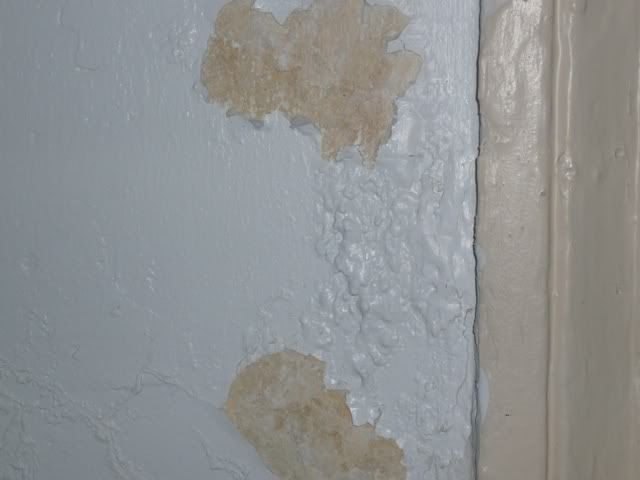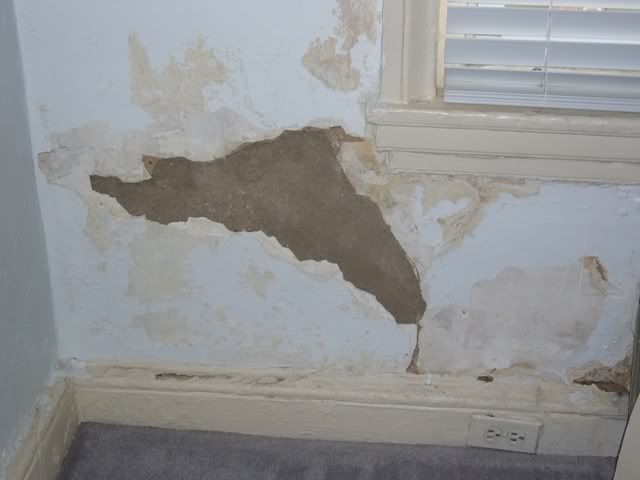Hi, I was wondering if someone could help me with a problem. I have a section of a wall that seems moisture-ridden. If you look at the photo below, you might see that there's these "bubbles" forming. They're spongy to the touch and when I scraped away at them. The paint came off and underneath the paint was a fine white powder. Once I got the powder out of the way, it seems like it's just a concrete wall behind it.
My question was, is this a major problem that I should be worried about? And if not, how would you suggest that I fix the wall? Should I just scrape away the affected areas, and then put some compound on and repaint?
Thanks for the help.

My question was, is this a major problem that I should be worried about? And if not, how would you suggest that I fix the wall? Should I just scrape away the affected areas, and then put some compound on and repaint?
Thanks for the help.






